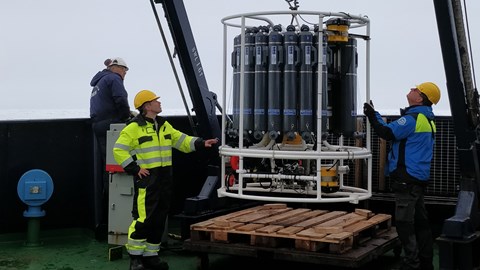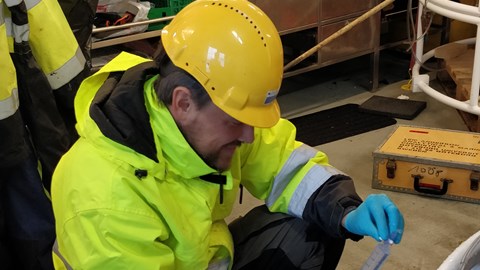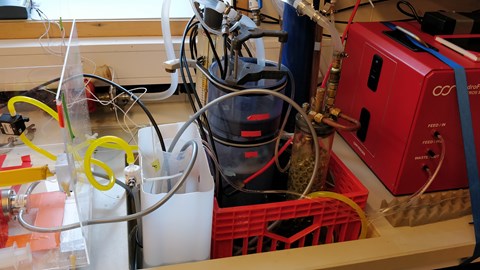Melting ice can lead to increased acidification of the Arctic Ocean
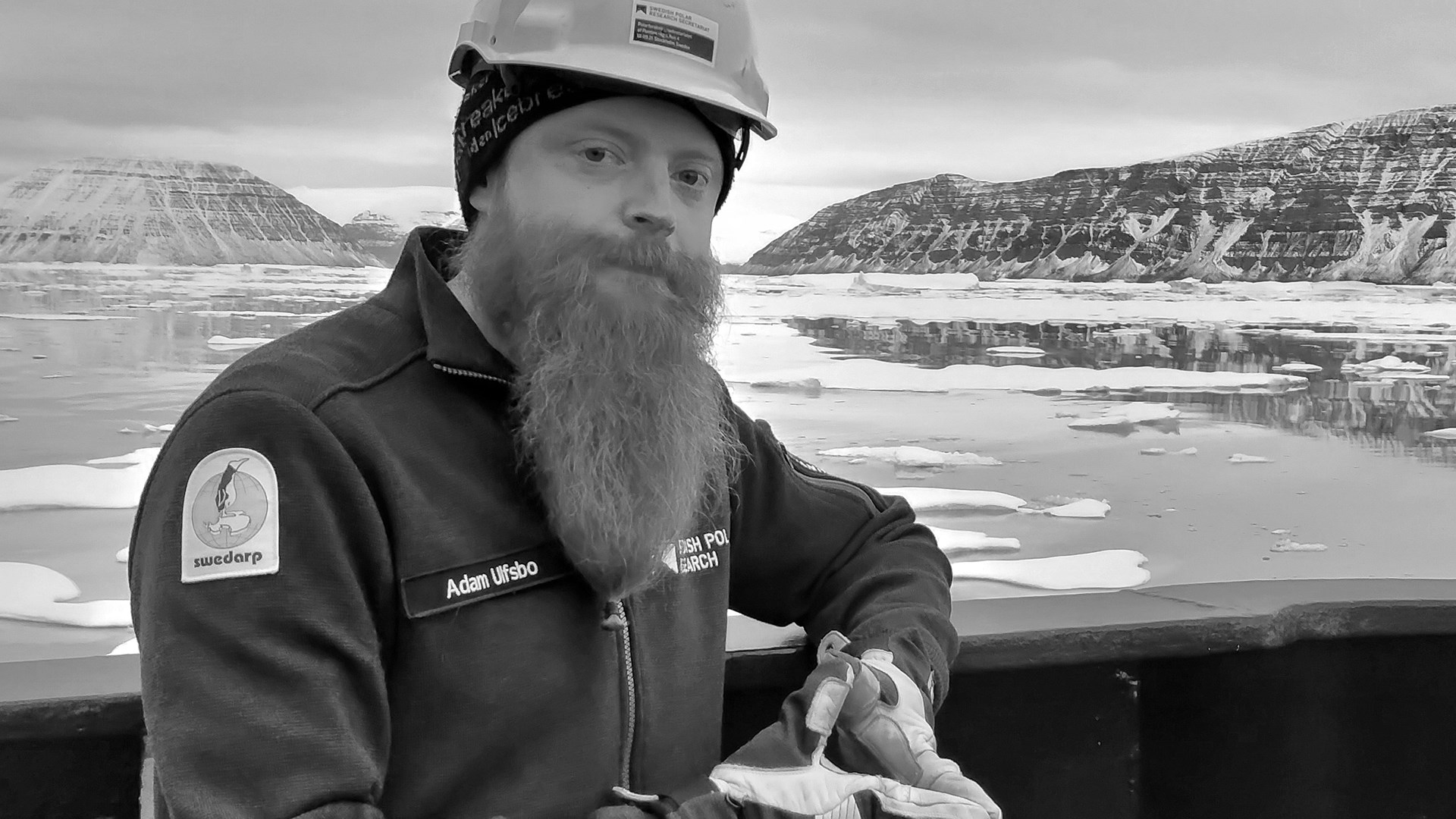
The rising temperature in recent years in the Arctic is causing sea ice and glaciers to melt at an ever-faster rate. The melting of the ice sheet in Greenland increases the inflow of meltwater into Greenland’s fjords and coastal water, with physical and geochemical effects on the fjord systems. This can lead to increased acidification of the Arctic Ocean, which can have a negative impact on the ecosystem and the ocean’s ability to absorb carbon dioxide.
– Melting has several physical and chemical effects on the fjord systems because it can affect the fjord’s circulation, nutrient supply and primary production – which is the biological process where living organisms convert inorganic substances into organic matter. An increased amount of meltwater from Greenland’s glaciers affects the carbon dioxide content in the Greenland fjords and neighbouring areas, which can lead to increased ocean acidification, says Adam Ulfsbo, researcher at the Department of Marine Sciences at the University of Gothenburg.
Greenlandic fjords are interesting to study
Adam Ulfsbo was one of the participants in the research expedition to the Ryder Glacier’s unexplored fjord system with the icebreaker Oden, which ended in September. To understand the effects of the melting of Greenland’s ice sheet on the Arctic Ocean, he has studied the transport of water and the flow of physical and biogeochemical parameters in and out of the Arctic Ocean.
– With these new and unique observations of chemical, hydrographic and bathymetric parameters, the hope is that we can assess the consequences of meltwater on ocean acidification in the fjords and the interaction with neighbouring coastal waters and the Arctic Ocean.
The Greenlandic fjords form the gateway between the open sea and Greenland’s ice sheet, and the fjords therefore play a crucial role in the stability of the ice sheet. The ever-faster melting of the ice sheet accounts for more than a quarter of the global sea-level rise. The exchange of water masses between fjords, coastal areas and the open sea has a significant impact on the environmental conditions in the Greenlandic fjords.
Cold water more sensitive to acidification
– The oceans absorb about 27 per cent of the carbon dioxide we humans emit into the atmosphere. Although this uptake by the ocean mitigates global warming, it also leads to reduced pH values, i.e., an increased degree of ocean acidification. The Arctic Ocean and its neighbouring subsystems are particularly sensitive to acidification of the sea due to low seawater temperatures and a high inflow of freshwater. The same processes that result in low pH, as well as low levels of carbonate ions in the central Arctic Ocean, also apply to the Arctic fjords.
– The preliminary results show that the surface water in the Sherard Osborn Fjord by the Ryder Glacier was warm and fresh, leading to an extremely low degree of saturation of calcium carbonate. This can limit the biological activity in the upper layer and affect the gas exchange of carbon dioxide between the atmosphere and sea.
Important with international cooperation
The Arctic Ocean is vast, with many different and complex areas. Adam Ulfsbo, who has participated in several international expeditions, believes that international collaborations are necessary to take the research forward and to facilitate the collection of new observations.
– Most expeditions often involve intensive international cooperation in order to ensure that scientific expertise is at the highest level on board and that the, often complex, scientific questions may be answered. Sweden should be pleased to have Oden, one of the most capable icebreakers in the world. As a research platform, it can reach places other ships and icebreakers cannot, which the Ryder expedition is a brilliant example of.
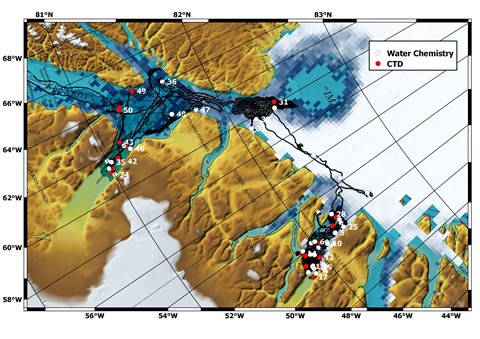
Overview map of the cruise track as well as the CTD stations (red) and the stations where water samples (white) where drawn from the rosette.
“Life on Oden is much simpler than life on land. Three high quality cooked meals are served per day, and there is always plenty of coffee and food available if you are one of the brave ones on the night shift. There is no digital noise from the internet or social media. At first, you may miss it, but soon you realize that it is actually quite nice. You can focus on your work to 100 per cent. The crew, the staff from the Swedish Polar Research Secretariat, and the researchers, collaborate with excellent team spirit, and there are few things that cannot be fixed, resolved or repaired on board.“ - Adam Ulfsbo

